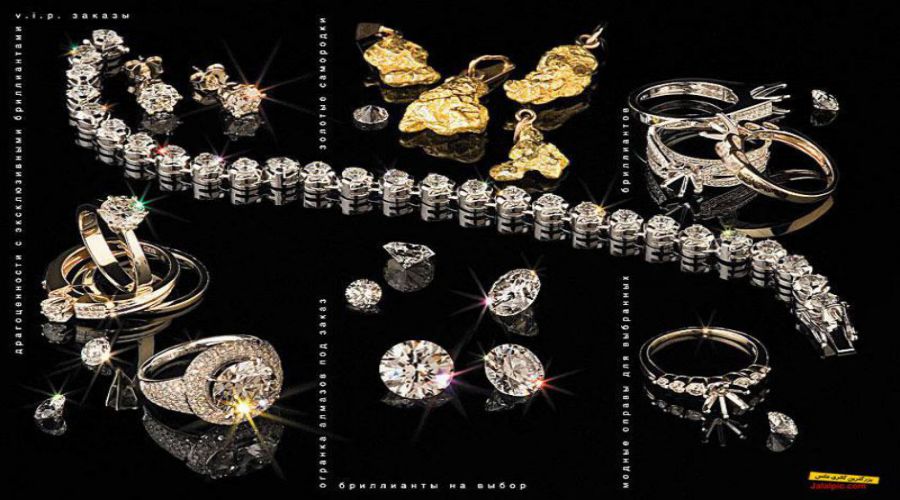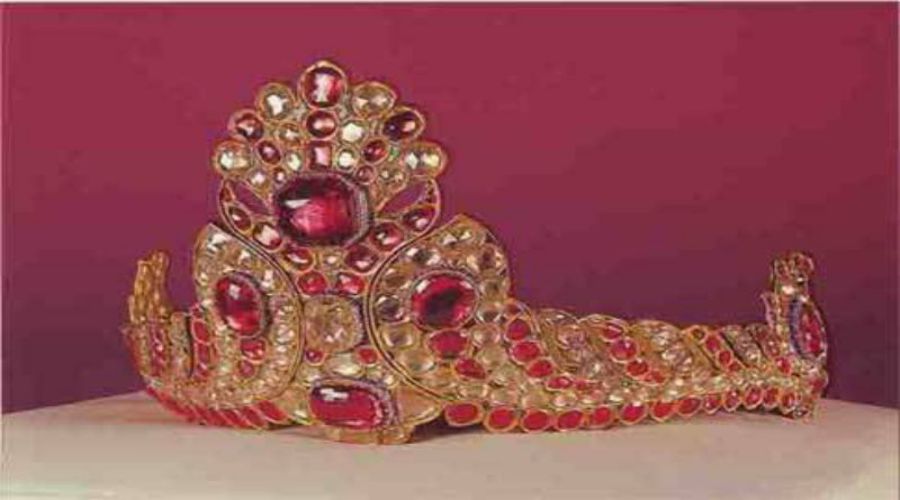National Jewelry Treasury
The incomparable “National Jewelry Treasury”, is a collection of the most expensive jewels of the world, collected over centuries.
These jewels and rarities were decorations for the rulers during the past eras, and often showed the glory and extravagance of their courts, as well as their power and wealth.
There is no information about the quality and quantity of the treasuries before the Safavid period. It can be said that the recorded history of the Treasury of jewels began with the Safavid monarchs. In short, the history of the amassment of the present collection is as follows:
Before the Safavid dynasty, certain jewels existed in the government treasuries, but it was with the Safavid dynasty that foreign travelers (Jean-Baptiste Tavernier, Chevalier Chardin, the Shirley brothers. George Mainwaring and others) began to mention these treasuries. The Safavid monarchs, over two centuries (907 to 1148 LH equal to about 1502 to 1735 AD), started to collect rare and beautiful gems. The gem specialists of the Safavid court brought fine stones to Isfahan, the capital of Iran at that time from the markets of India the Ottoman Empire and European countries like France and Italy.
After the rule of Shah Soltan Hossein and the entry of Mahmoud the Afghan to Iran, the treasury was scattered and some of the jewels were taken by Mahmoud the Afghan and transferred to Ashraf the Afghan. After the entry of Shah Tahmasb Π and Nadir to Isfahan, these jewels fell into the hands of Nadir and thus were preserved inside the country. Later, in order to regain the jewels that had been transported to India, Nadir wrote several letters to the India court but did not receive any favorable reply. After Nadir’s victory in India in 1158 LH (1745 AD), Mohammad Shah delivered cash amounts, jewels, and weapons to Nadir as booty. Part of the treasures, which were obtained in India never, reached Iran and was lost during transportation. According to the tradition of that time, after returning to Iran, Nadir send part of the booty as gifts to neighboring rulers. He also presented some beautiful and rare objects to the Holy Shrine of Imam Reza, while some were distributed among the soldiers of his army.
After the assassination of Nadir in 1160 LH (1747 AD), Ahmad Beg Afghan Abdali, one of his commanders, looted the treasury of Nadir. One of the famous jewels that left Iran at this time and never returned was the famous “Kooh-e-Nur” (Mountain of Light) diamond. This diamond passed on to the hands of Ahmed Shah Durrani and then to Ranjit Singh of Punjab. After his defeat by the British government, the Kooh-e-Nur diamond fell into the hands of the East India Company, and in 1266 LH (1850 AD) it was given to Queen Victoria as a gift.
After this event, there was no major change in the treasury until the time of the Qajar dynasty. During the Qajar period, the Treasury was collected and recorded. Some of the stones were mounted on the Kiani Crown, the Nadir Throne, the Globe of jewels, and the Peacock Throne (or the Sun Throne).
Two others items that were gradually added to this Treasury, are the turquoises, the genuine precious stone of Iran, extracted from the local turquoise mines, and the other is pearls, hunted from the Persian Gulf.
According to the law approved on 25th Aban 1316 SH (1937 AD) a major portion of the Treasury was transferred to Bank Melli Iran and formed part of the reserves for note issues, and later became collateral for government liabilities to the Bank.
The present collection was constructed in 1334 SH (1955 AD). In 1339 SH (1960 AD), by the establishment of Central Bank of Iran, the Treasury was transferred and deposited with the Central Bank. Now it is also safeguarded by The Central Bank of the Islamic Republic of Iran.
During the glorious Islamic Revolution of Iran and the imposed war, the devoted and revolutionary employees of The Central Bank of the Islamic Republic of Iran protected this precious and peerless collection.
Now, you will visit a unique collection of precious stones that have been gathered over turbulent eras. It is hoped that by viewing these objects and remembering the Almighty God, you will see the finite place of humans in the vast world, and recognize that the place of crowns and tiaras is in a museum — which shows a bloody and painful history — a history that should under no circumstances be repeated again.











Get Social